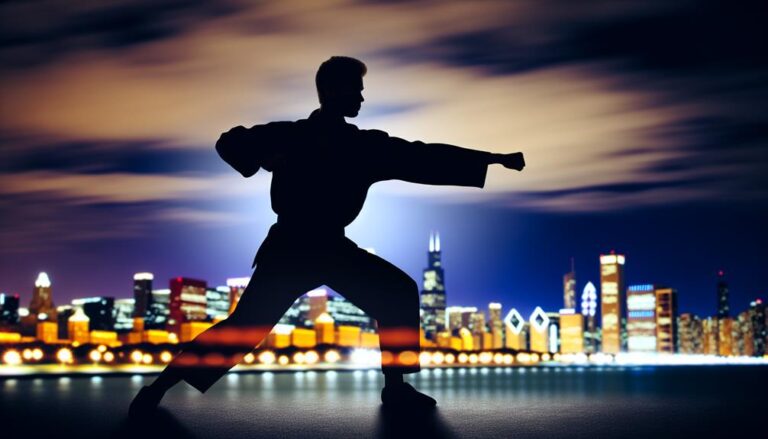Iaido, also known as “the way of the sword,” is a modern Japanese martial art focusing on drawing, striking, and then re-sheathing the sword.
Iaido practitioners train to respond to potential threats with a single, precise cut using an iaito or a shinken).
Belts are not traditionally worn in iaido, The traditional uniform for iaido practitioners, or iaidoka, is a keikogi, a loose-fitting jacket, and pants similar to a judo or karate uniform.
The focus of iaido is on precise, controlled movements with the sword rather than physical strength or athleticism.
The art is often practiced in a seated position, making a beltless practical. Some modern schools or organizations may incorporate belts to indicate rank or progression, but this is only sometimes accepted practice and varies from school to school.
The proper care and handling of the sword is a central aspect of iaido training. The respect and reverence with which the sword is treated reflects the art’s deeply ingrained cultural and historical importance.
Contents
Belts in iaido. Are there any?
No. Iaido practitioners do not use the belt as a ranking or mark of transition in their training. While many martial arts styles utilize belts to indicate rank or progression, belts are not traditionally worn in iaido. Instead, iaidoka typically wears a uniform called a keikogi, which consists of a loose-fitting jacket and pants, similar to a judo or karate uniform.
The keikogi is usually white, although other colors may be worn in some schools.
- One reason belts are not typically worn in iaido is that the art focuses on the performance of precise, controlled movements with the sword rather than on physical strength or athleticism. In this sense, iaido is more similar to traditional Japanese arts, such as tea ceremonies or flower arrangements, which do not use belts as a ranking system.
- Another reason belts are not traditionally worn in iaido is that the art is often practiced in a seated position, with the iaidoka seated on a mat called a tatami. A belt would not be visible in this seated position and serve little purpose.
- Despite the absence of belts in traditional iaido, some modern schools or organizations may incorporate belts as a way of indicating rank or progression. However, this is only sometimes accepted practice and varies from school to school.
In addition to the keikogi, iaidoka may also wear a hakama, a garment with divided legs worn over the keikogi.
More advanced practitioners typically wear the hakama, and its length and style may vary depending on the school or organization.
While belts are not a traditional part of iaido, the uniform and sword used in the art are deeply rooted in Japanese cultural and martial tradition.
The iaito, for example, is a wooden sword used for training purposes, while the shinken is a sharp, real sword that is only used for advanced training or demonstration purposes.
The proper care and handling of the sword is a central aspect of iaido training. The respect and reverence with which the sword is treated reflects the art’s deeply ingrained cultural and historical significance.
Iaido, also known as the art of drawing the sword, is a traditional Japanese martial art involving drawing the sword from its scabbard, striking a target, and returning the sword to its scabbard.
It is primarily a solo practice and is often performed with a wooden sword called a bokken, or a blunt metal sword called an iaito.
In iaido, practitioners typically wear a hakama uniform and follow a specific set of movements called kata.
These katas are often named after the techniques they represent, such as “Mae,” “Ushiro,” or “Tsuka-ate,” and are usually performed in a specific order.
There is no universally accepted ranking system for iaido, as different organizations and schools may have their own systems.
However, many iaido practitioners follow a ranking system similar to the one used in kendo, which includes the following ranks:
- Kyu: These are the beginner ranks, typically denoted by a number from 6 (lowest) to 1 (highest).
- Dan: These black belt ranks are typically denoted by a number from 1 (lowest) to 8 (highest).
The requirements for attaining each rank may vary depending on the organization or school but typically involve passing an examination or test that includes both practical and written components.
Some schools may also require students to demonstrate knowledge of iaido history and theory and their practical skills.
Closing thoughts
Belts are not traditionally worn in iaido, a Japanese martial art that focuses on drawing, striking, and re-sheathing the sword.
The traditional uniform for iaido practitioners, or iaidoka, is a keikogi, a loose-fitting jacket, and pants similar to a judo or karate uniform.
The focus of iaido is on precise, controlled movements with the sword rather than physical strength or athleticism. The art is often practiced in a seated position, making a beltless practical.
Some modern schools or organizations may incorporate belts to indicate rank or progression, but this is only sometimes accepted practice and varies from school to school.
The proper care and handling of the sword is a central aspect of iaido training. The respect and reverence with which the sword is treated reflects the art’s deeply ingrained cultural and historical significance.





